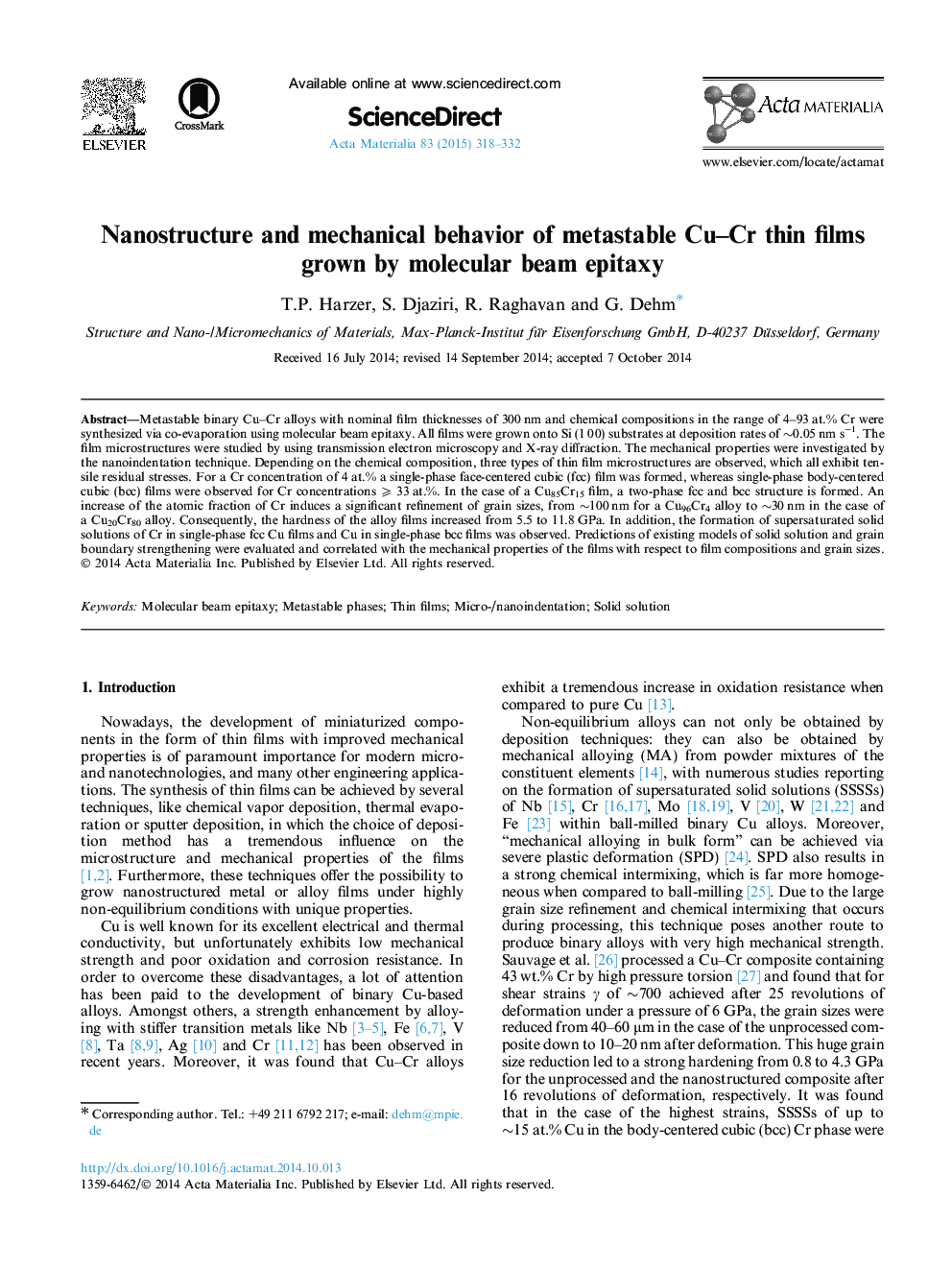| Article ID | Journal | Published Year | Pages | File Type |
|---|---|---|---|---|
| 7880932 | Acta Materialia | 2015 | 15 Pages |
Abstract
Metastable binary Cu-Cr alloys with nominal film thicknesses of 300 nm and chemical compositions in the range of 4-93 at.% Cr were synthesized via co-evaporation using molecular beam epitaxy. All films were grown onto Si (1 0 0) substrates at deposition rates of â¼0.05 nm sâ1. The film microstructures were studied by using transmission electron microscopy and X-ray diffraction. The mechanical properties were investigated by the nanoindentation technique. Depending on the chemical composition, three types of thin film microstructures are observed, which all exhibit tensile residual stresses. For a Cr concentration of 4 at.% a single-phase face-centered cubic (fcc) film was formed, whereas single-phase body-centered cubic (bcc) films were observed for Cr concentrations ⩾ 33 at.%. In the case of a Cu85Cr15 film, a two-phase fcc and bcc structure is formed. An increase of the atomic fraction of Cr induces a significant refinement of grain sizes, from â¼100 nm for a Cu96Cr4 alloy to â¼30 nm in the case of a Cu20Cr80 alloy. Consequently, the hardness of the alloy films increased from 5.5 to 11.8 GPa. In addition, the formation of supersaturated solid solutions of Cr in single-phase fcc Cu films and Cu in single-phase bcc films was observed. Predictions of existing models of solid solution and grain boundary strengthening were evaluated and correlated with the mechanical properties of the films with respect to film compositions and grain sizes.
Related Topics
Physical Sciences and Engineering
Materials Science
Ceramics and Composites
Authors
T.P. Harzer, S. Djaziri, R. Raghavan, G. Dehm,
